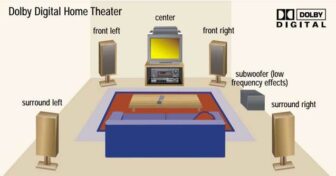Helix P Six Dsp Review
With the P SIX, Helix may not have opened a new amplifier genre, but it has shown that Class-D amplifiers can be more than efficient and practical. Now comes the P SIX DSP Ultimate, a brand-new upgrade that has been improved in every way. Read our Helix P Six Dsp Review.
Helix P SIX DSP Ultimate – 12-channel DSP with 6-channel amplifier.
Premium DSP amplifier, Digital technology for the highest demands.

The new P SIX DSP Ultimate is only recognisable as a new model at second glance. It comes in the same, noble black aluminum housing as the MK2, only that above the “Made in Germany” logo instead of “MK2” now reads “Ultimate”. In Schmallenberg, Sauerland, they are very proud that many products are manufactured in house, and they are even particularly proud of the P SIX DSP Ultimate, because it represents the flagship of the in-house DSP amplifiers. Back in 2015, Helix placed the P SIX DSP at the very top of the market. Clearly, “digital” Class-D amplifiers were the future, only that most approaches went in the direction of all-in-one, small and practical. The P SIX, however, was intended to play on the level of the best analogue amplifiers, only with modern, efficient technology – a DSP amp for high enders. A lot has happened since then and it was time to update the P SIX. For some time now, Audiotec Fischer, the parent company of the Brax, Helix and Match brands, has been a development partner of Texas Instruments.
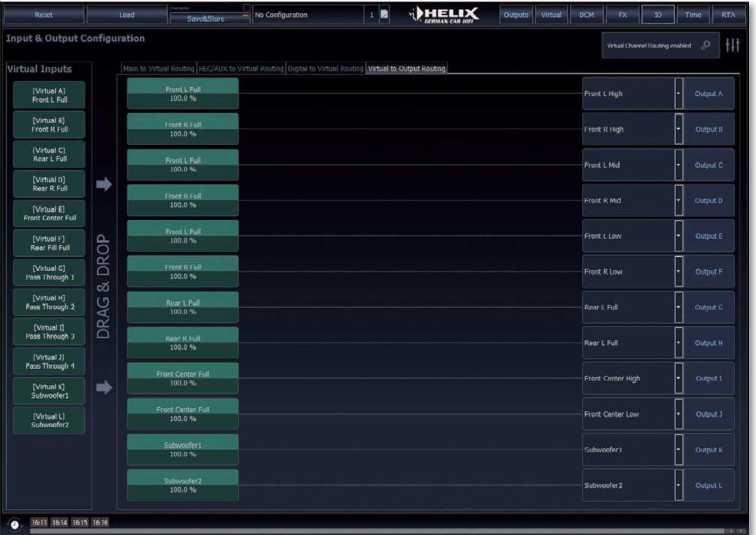
This involves the amplifier ICs, which are jointly being advanced further and further. The latest generation of these marvels manages


The 6 processed outputs are distributed over 4 RCA sockets and the digital optical output. The inputs feature 6 x RCA, 6 x high-in and digital, either optical or coax to deliver enormous power, but without the usual 10% distortion that chip manufacturers like to write into the data sheet. The usual applications for amplifier chips are smartphones, Bluetooth speakers or soundbars, nothing to do with building a noble car hi-fi amplifier. So a lot of development work has gone into the P SIX DSP Ultimate, e.g. also in the mounting and fixing of the chips, which is extremely important for optimal heat dissipation and thus performance. However, the most important innovation of the P SIX DSP Ultimate might be the upgrade to the current coprocessor platform ACO. Not only is a powerful 32-bit processor used; it is also integrated into the audio work by Helix. This is because Helix programs quite a few features itself, which go far beyond the standard functions of the signal processor. Sound effects like the FX functions or even the (in)measuring functions are not possible without the help of a powerful coprocessor.
Specs

Software
All DSP products of the Brax, Helix and Match brands are controlled by the DSP PC tool, which is now available in version 5 free of charge. Besides 30 EQs per channel, time alignment of both inputs and outputs and of course freely programmable crossovers, there is the VCP (virtual channel processing) with the possibility to process channel groups as virtual channels between inputs and output channels. For example, a three-way front system with six output channels for right and left sides can be managed by the virtual channels front left and right. The time alignment of the individual loudspeakers, the crossings of tweeter, midrange and woofer are carried out at the output channels, here also peculiarities of the installation situations are corrected. The sound-decisive equalizing, however, can be conveniently performed in the virtual front channels, for the entire front system and across all crossover frequencies. The virtual channel can also be used to “shift” the entire three-way side via time alignment or to level it via the gain control. The FX sound effects now also affect the virtual center and rear channels, which means that two-way centers can also be perfectly controlled.
Under the FX section (effects), algorithms for optimizing the center and bass can be activated. The real center is a blessing by itself; a center channel signal is calculated by specially programmed audio processing. Thus, the real center is not a stopgap solution like a mono sum or a reversed sum of left and right. For center there is the clarity expander, which affects the midrange reproduction, e.g., for voices. Bass processing includes the SubXpander, which adds low tones to music by creating subharmonics to existing frequencies. In addition, there is a dynamic bass boost, which boosts the bass depending on the playback volume. This helps quite nicely with factory systems that have limited loadable woofers and subwoofers, for example. There are adjustment controls for all FX functions, with which you can specifically influence the extent and function.
Furthermore, the latest measurement functions of the PC-Tool are supported. The well-known RTA (real-time frequency response measurement with optional microphone) has been improved with some new features; there are now even more setting possibilities concerning the measurement, e.g., a microphone calibration. If desired, the RTA can automatically adjust the EQs, tolerance thresholds and the number of EQs to be used can be set here. Version 5 also allows the adjustment of individual speakers with their crossovers, creating perfect acoustic filter slopes that then also add to a clean SPL summation when the speakers play together.
The ISA can also be used to measure sums of several inputs, thus tracking down hidden all-pass filters that remain inconspicuous in individual measurements. This electrical measurement of the inputs saves the installer a lot of time in troubleshooting and tuning of the DSP, because at the same time as the measurement, the input EQs (and the input time) can be set with immediate success control. Furthermore, there is the ATM (auto matic time measurement), which allows a fully automatic runtime measurement and adjustment of the entire system. The advantage here is that the measurement signal is played back as a sound file like a piece of music via the head unit; this is possible in all type of vehicles. The measurement is then carried out using the company’s own in-house programmed measurement signals and a great deal of audio processing. The time of all the loudspeakers in the system is compared with a reference loudspeaker and then calculated.
The current version also includes the advanced import function of setups, which is now also available for the inputs. This makes life easier, especially for professionals, because it allows previously created setups to be transferred in whole or in part to the fresh unit. For example, the existing subwoofer settings of an existing setup can be placed on any two channels with a click. The transfer of high pass, low pass, EQ, gain and name from any channel to any channel is possible for inputs and outputs – practical for power users. Very praiseworthy are the numerous integration features like power save mode for CAN vehicles or bypass circuits for diagnostic programs of some factory radios and a freely configurable source management with automatic switching of sources and vehicle sounds. The in-house ADEP.3 system is capable of bypassing the speaker diagnostics of some vehicles, thus bypassing error codes or even disabling channels.
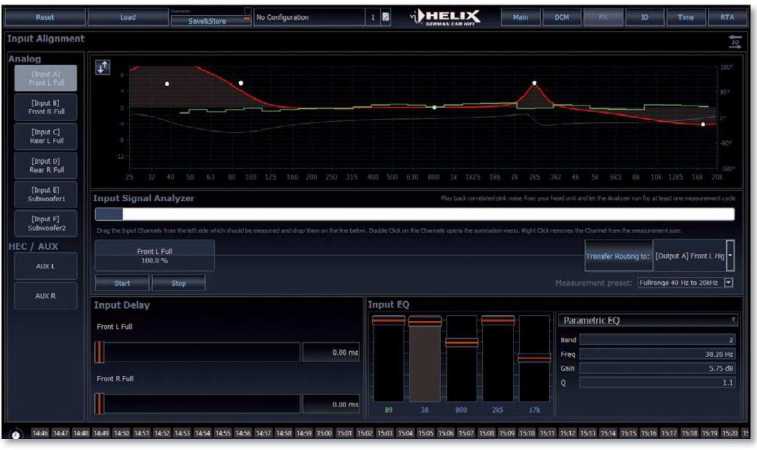
The ISA (Input Stage Analyzer) features single or combined measurment of the input channels. Time alignment and equalizing can be applied immediately
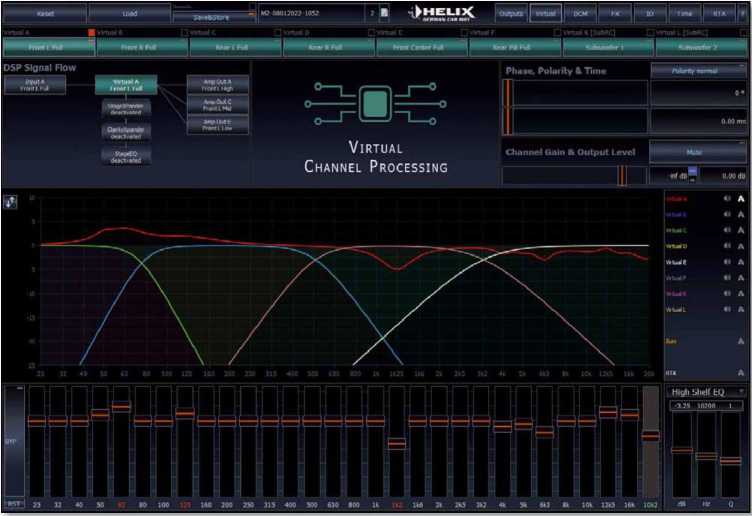
As an alternative to the normal routing, virtual channel processing can be used to combine groups together and equalize them across the crossover frequencies
The third powerful innovation concerns the DSP itself. Of course, the P SIX DSP Ultimate must be able to do everything that technology can offer. The hi-res frequency range up to over 40 kHz requires a sampling rate of 96 kHz (i.e. a doubling of computing power compared to 22 kHz/48 kHz), 12 DSP channels and also the in-house Virtual Channel Programming with additional virtual channels that also need to be calculated; all this requires a second DSP chip. The P SIX DSP Ultimate thus belongs to the few dual-core DSPs on the market, in this case with the Analog Devices team ADAU1462 and ADAU1452. The model was of course the Helix DSP Ultra, which is not 1:1 in the P SIX, but almost. For comparison: The V Twelve DSP processes 14 DSP channels + VCP, but is not capable of handling hi-res frequency range. The Helix DSP PRO MK2 can do 10 channels and hi-res, but is not capable of handling VCP (the DSP PRO MK3 with everything will be dual-core).
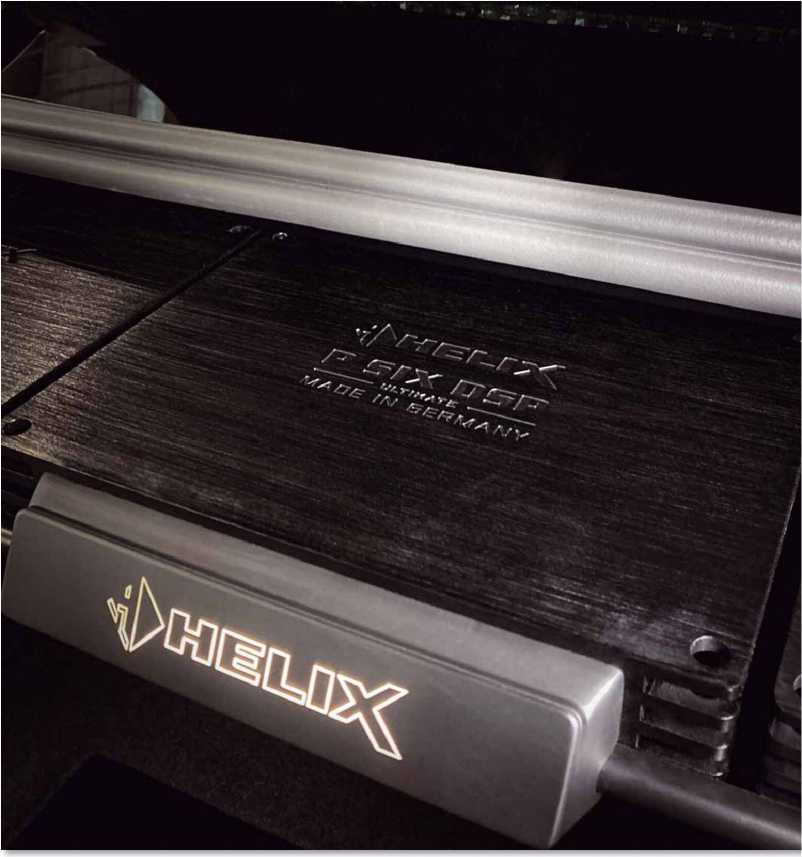
Laboratory
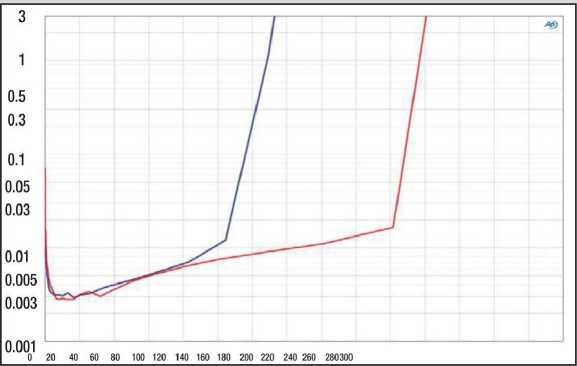
The P SIX DSP Ultimate is one of the most powerful multi-channel power amplifiers. With approx. 120 and 190 W at 4 and 2 ohms, it has plenty of power, which is also accompanied by extremely low distortion
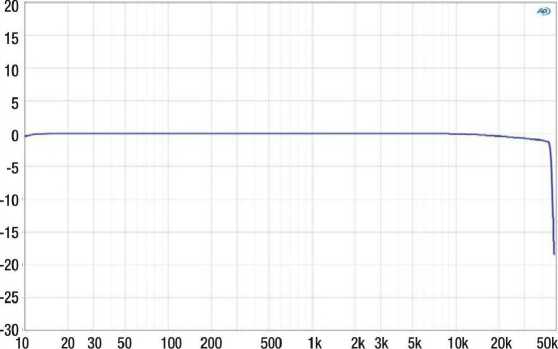
The P SIX DSP Ultimate shows an audio frequency range of up to more than 40 kHz thanks to the high sampling rate of the DSP and the high PWM frequency of the Class-D power amplifiers
The well-known step-up power supply has also been improved with a new circuit concept; we now have to deal with a synchronous step-up converter, which works even more efficiently. The concept of the signal-dependent regulated internal operating voltage, which switches the voltage down when the signal is weak in order to save power and produce less heat, has also been adopted, which increases efficiency.
All analogue inputs can be adjusted in sensitivity with jumpers, which allows an optimal adaptation to the source and reaches up to 32 volts at the high level input to adapt even top factory systems. And digitally speaking, the P SIX Ultimate is also richly equipped. At the input there is either an electrical or an optical input available, at the output there is an optical S/PDIF for the processor channels K and L, which then drive a subwoofer amplifier, for example. This is also the concept of the P SIX DSP Ultimate: Instead of using a single DSP amplifier to power the entire system, the P SIX DSP Ultimate works together with the matching P TWO and P ONE two-channel and mono amplifiers as the control center of a high-end system. The result is a truly high-end audio system in which power and performance are beyond reproach.
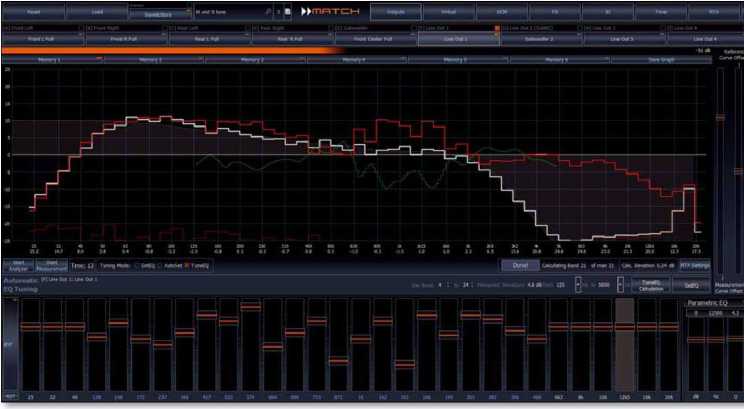
RTA measurement of a mid-range woofer: Original curve (red) and result with 24-dB crossing (white). You can see the correction via TuneEQ in green and, at the bottom, the EQ bands 4-24 are accordingly adjusted. We measured with an accuracy of 1/6 octave and standard smoothing; finer is possible if desired
Measurements and sound
During the measurement, we clearly state that the P SIX DSP Ultimate is one of the best amplifiers ever created. Whether analogue or digital, the P SIX DSP Ultimate is at the very highest level. With a channel power of 129 watts at 4 ohms and 219 watts at 2 ohms, it is one of the most powerful full-range amps ever with more than four channels. This is almost twice as much as a multi-channel all-in-one solution – the TI chips say hello! But that is not enough; it also delivers an extremely clean performance. Only 0.003% THD+N at 5 watts and 0.005% at half-load are extremely good values. The signal-to-noise ratio is also top notch for such a sophisticated amplifier, and even the damping is impressive. And in terms of sound? Beyond any doubt. There is no music genre and no passage, no matter how difficult, that the P SIX DSP Ultimate cannot master. It pleases with brute power as well as with breathtaking dynamics. Then it serves acoustic sounds with the finest details, which are perfectly reproduced in the room. Troubleshooting is pointless. Rather, the P SIX DSP Ultimate belongs to those amplifiers that also convey the mood and atmosphere of the music, so that one easily forgets to listen to a canned sound. Maybe even too good or too spectacular? In any case, not common at this level.
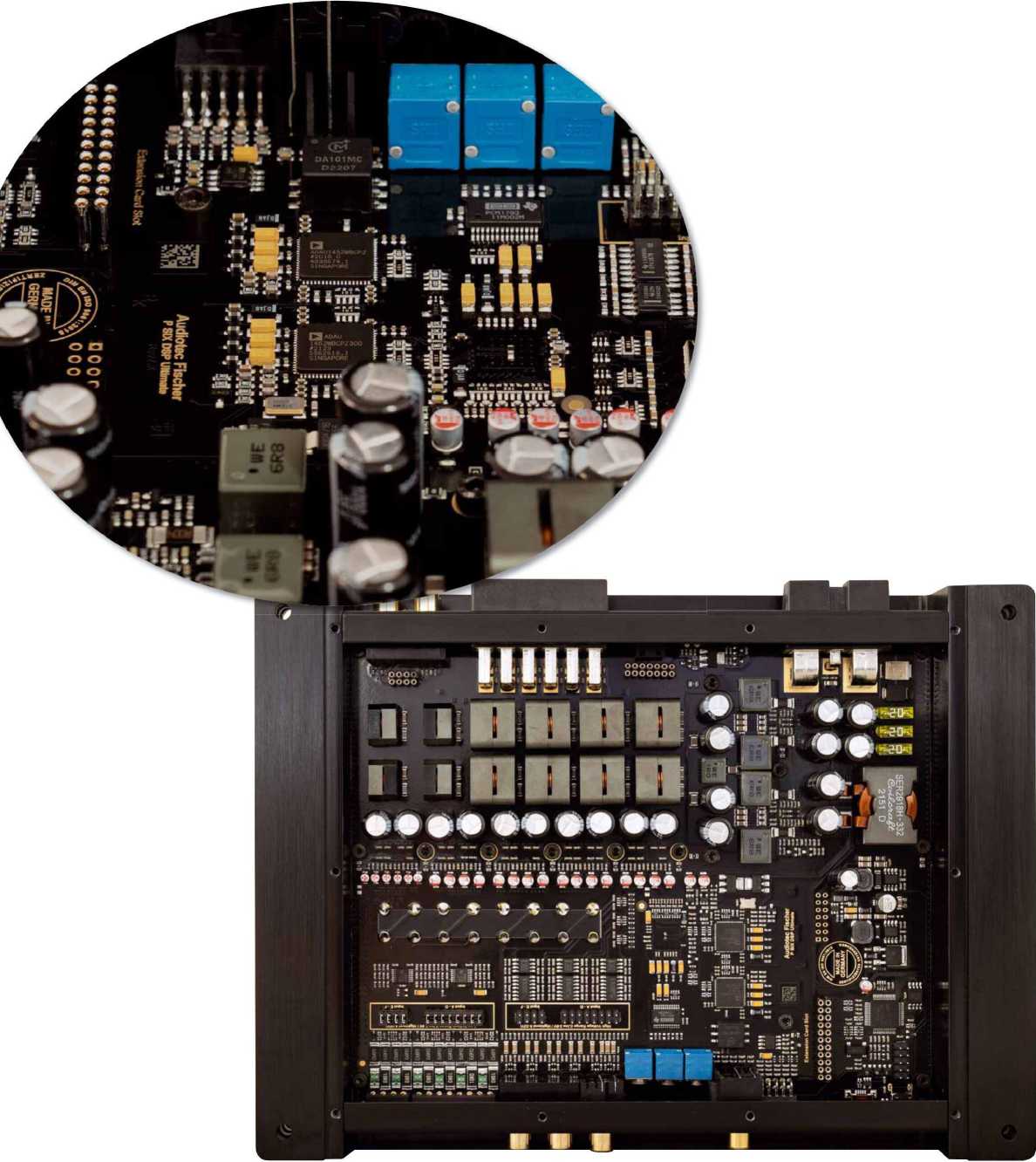
Everything on the board is new. A highlight is the DSP department, which now has two processor chips

The P SIX DSP Ultimate differs only in the lettering from its predecessors
Conclusion
With its outstanding features, the P SIX DSP Ultimate basically has no competition. It is a top-notch 6-channel DSP amplifier in its own right or the perfect control centre for a full-blown audio system with high-end aspirations.
Elmar Michels
Specifications

Verdict
When you purchase through links on our site, I may earn an affiliate commission. Here’s how it works.
Helix P SIX DSP Amplifier UNBOXING!
We crack into an exceptional DSP amplifier from German brand Helix. Check it out! AV-DC, Panorama, South Australia 08 ...







